Hyperreality and Ethereality
In the summer of 2017, SVA’s Summer Residency Program presented an exhibition of work by program alumni E. Adam Attia, Alva Calymayor, Phyllis Dooney and Eto Otitigbe. Borrowed from Jean Baudrillard's essay of the same name, Astral America addressed how the concepts of hyperreality and ethereality manifest in the contemporary notion of "America" as both location and ethos. The exhibition interrogated the tension between phenomena of displacement and the lived experiences of citizens of a globalized world. The exhibition included new works produced in response to the prompts embedded in Baudrillard’s writings, as well as previously existing works that help bring the past, present and future into dialogue.
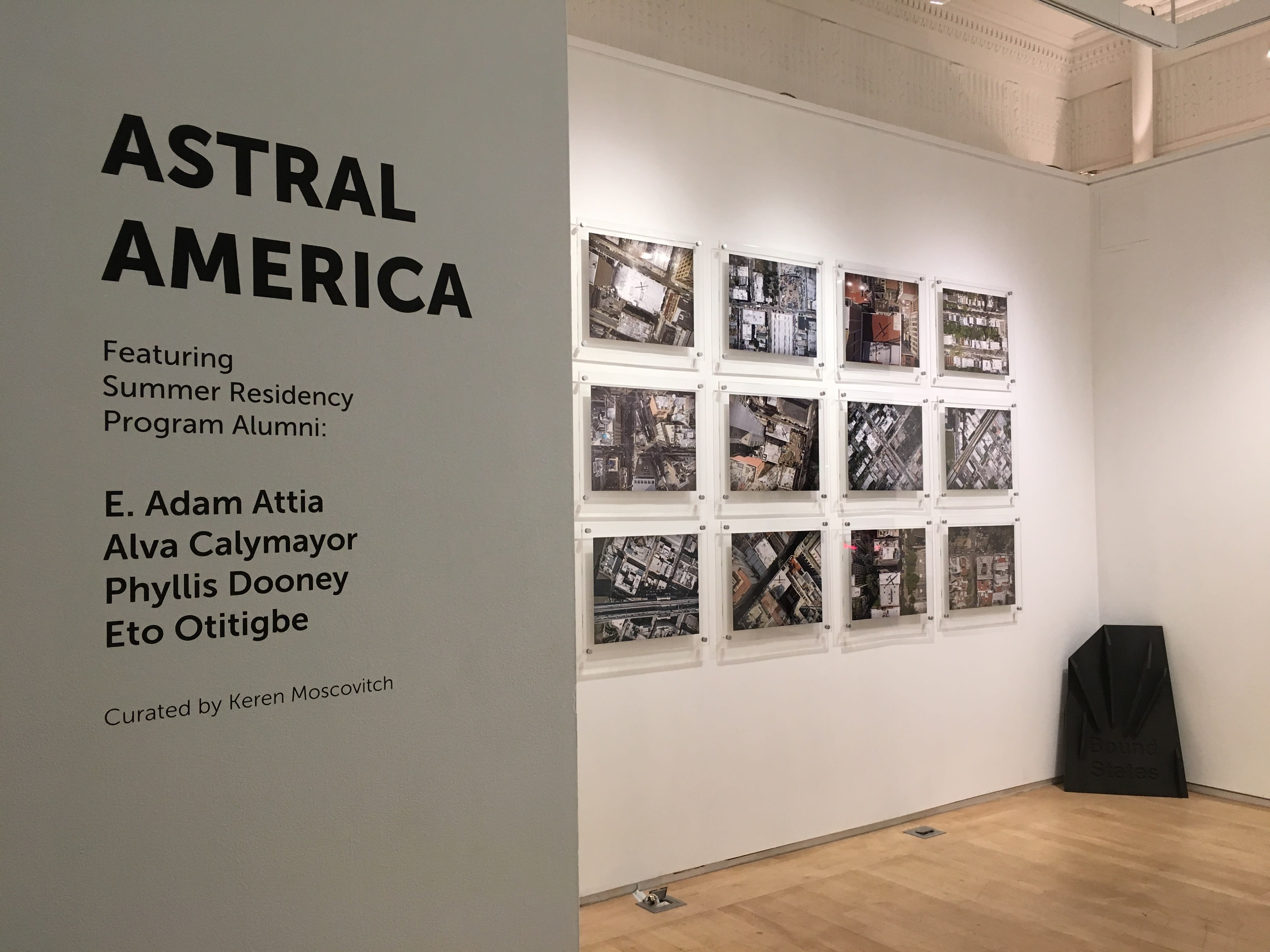
E. Adam Attia joined the US Army in 2003, where he served for three years as a geospatial analyst. His military service inspired his mission as an artist to create conversations about topical social and political issues. In 2012, he began working in the streets of New York under his given name ESSAM, Arabic for “a safeguard.” Res Judicata (2012-2017) is an going series of public interventions, exploring the presence and use of un-manned aerial vehicles (UAV’s/drones) in surveillance and warfare. Producing 1:1 scale large, black, silhouette-like shadows on rooftops around the globe, Attia then captures photographs of these large-scale installations, resulting in a conflation of the real and the imaginary. Actively altering the digital landscape through his interventions, Attia captures representation of the earth as seen from above through Google Earth and other web-based mapping platforms that have spontaneously captured the presence of drones flying overhead. The shadows in Traces (2017) are the accidental remains of the surveillance state, the fingerprints of an unknown military presence that, despite all efforts at secrecy and concealment, are revealed through the ubiquity of vision machines.
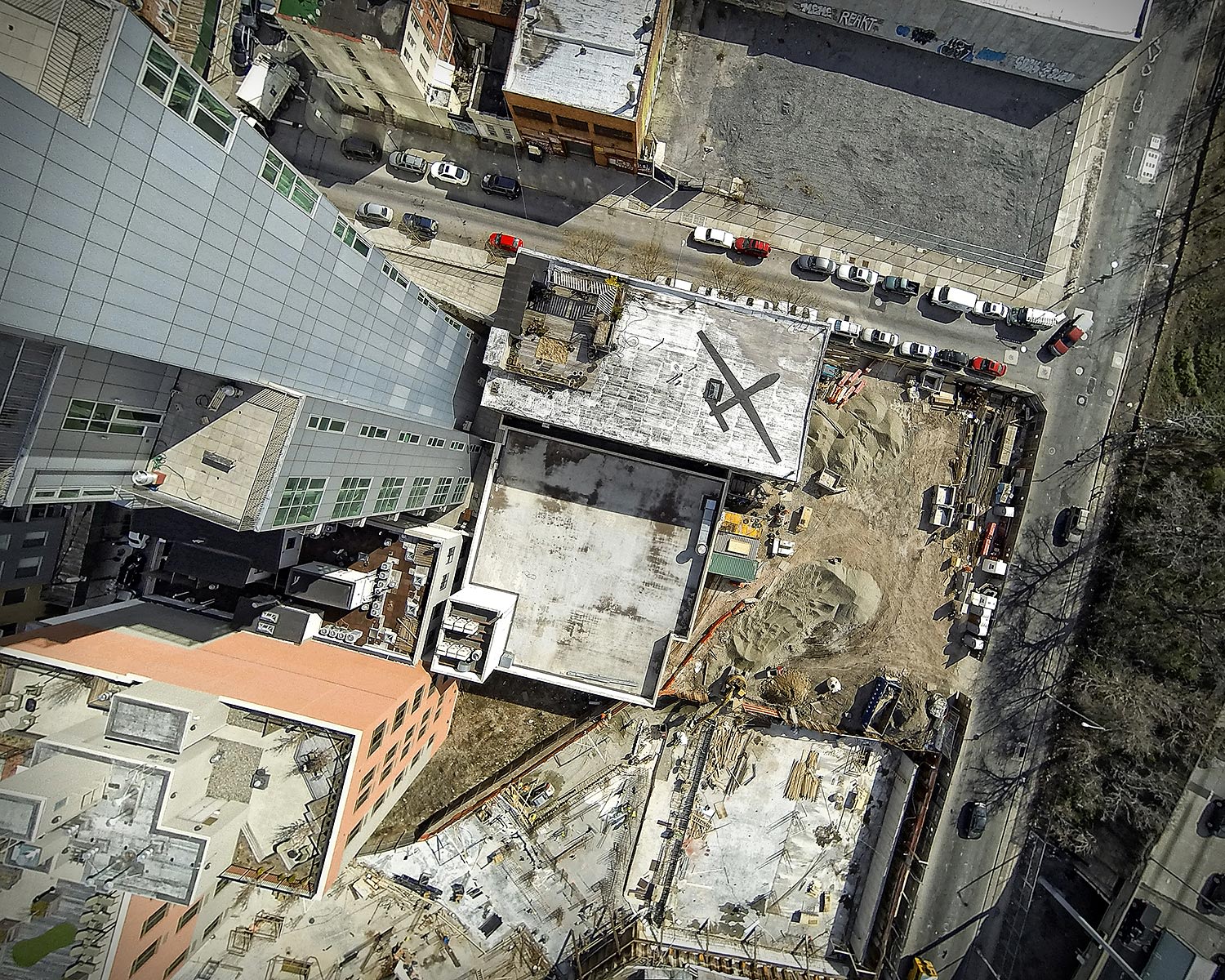
Alva Calymayor’s work investigates the tragicomic nature of immigration, home and belonging and the slippage of identity in America. Untitled: Hey! Where have you been?! Thought you got deported (2017) revisits fragments of text from Baudrillard's America. Drawings are made on an oversized set of Xerox photocopies, with marginalia marks added including scribbles, comments, glosses (annotations), critiques, doodles and border vignettes (bricks, plumbing pipes, barbed wire). Hermeneutic and comedic tropes form a temporal and conceptual palimpsest. Outdated meme characters Heman and Pepe the Frog stage a salutation expressed to the artist while ordering an Americano from her local coffee shop. Baudrillard's own questions trigger Alva's memories, as she explores laughter in America. A fan blows, activating the drawing as if it were an animated gif. Also on display is an excerpt from The Names Below (2007-2016). Nine years ago, Calymayor began to keep track of the names and dates stamped underneath paper takeout bags. The names belong to the line workers who supervise the making of each individual bag. Eight out of ten workers are of immigrant FrenchCaribbean and/or Hispanic heritage. This collection is the physical manifestation of these unanswered questions: “How does a name exist?” and “Under which circumstances are names given?
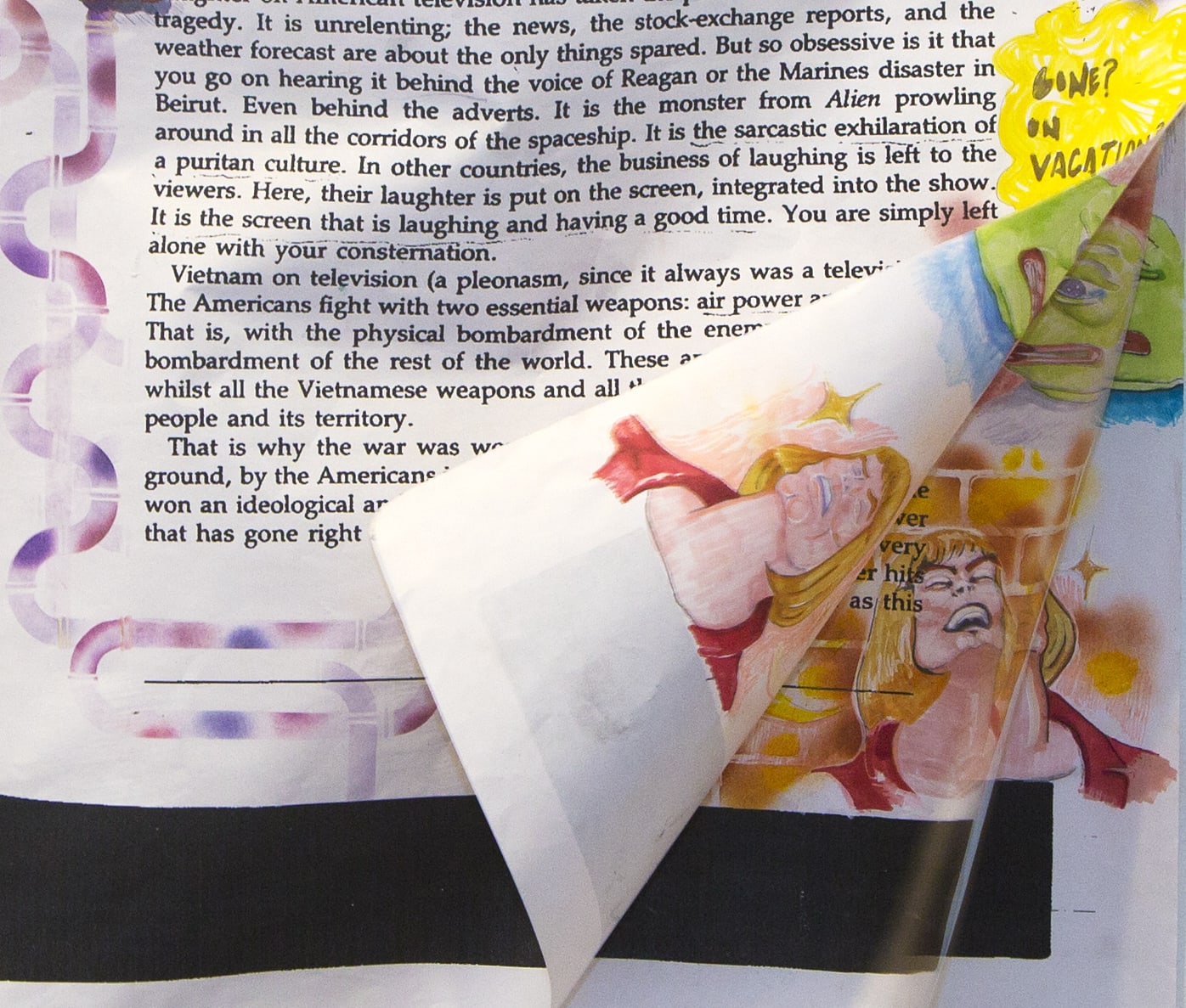
Phyllis Dooney’s short film TO THE GAD-FLY (2017) is a probe into historical memory and race in America through multiple lenses or gestures. As William Faulkner said, “The past is never dead. It's not even past.” On January 29th, 2017, Dooney travelled to Wilmington, NC to make a piece on the 1898 Race Riots. The New Black Panthers were in town and their presence confirmed a confluence of the past, present and future. Featuring footage made in collaboration with spoken-word poet Jeffery Boston Weatherford, the piece explores experimental filmmaking itself, utilizing techniques born in analog and bringing forth a dialogical possibility alongside a collective history that underscores the visual conversation about time and transmission. On the gallery’s street-side monitor, State Fair (2017) utilizes various forms of mirroring to deconstruct time and the corporeality of the American body politic.
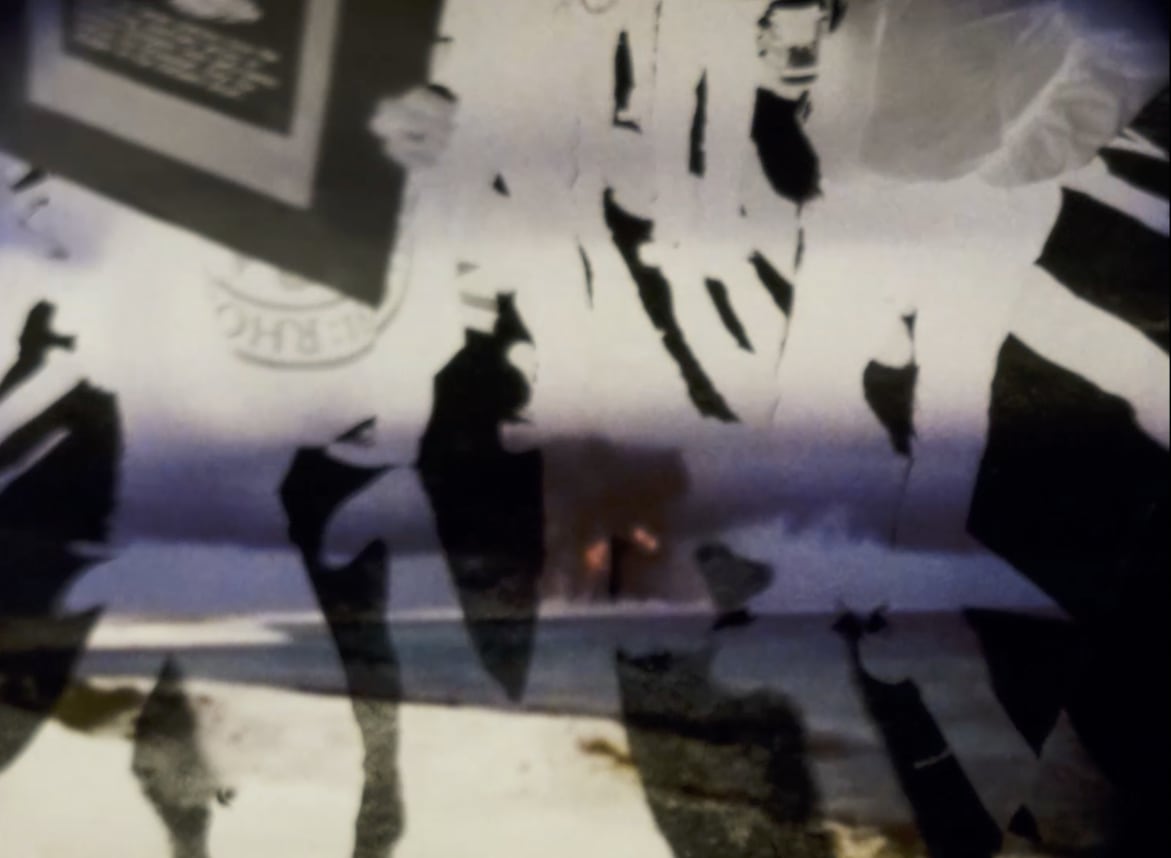
Eto Otitigbe presented two modular sculptures from the series Patience on a Monument, exploring the memory traces of presence and disappearance through physical memorials and other public sculptures. Bound States (2016) and Forced Away and Expelled (2016) were inspired by Otitigbe’s travels to Egypt, where he followed the flow of the Nile River all the way to the Aswan Dam, a functional monument that has effected both progress and blight to archaeological, natural and residential sites. Extending the artist’s international research into the collision of race, culture and artistic production, these objects transform with each showing to comment upon the changing nature of history and the ephemerality of object-hood. Interrogating the ownership of memory and grief, Otitigbe’s work has been stripped of its parts and presented as emptied vessels, inscribed with the speech of loss.
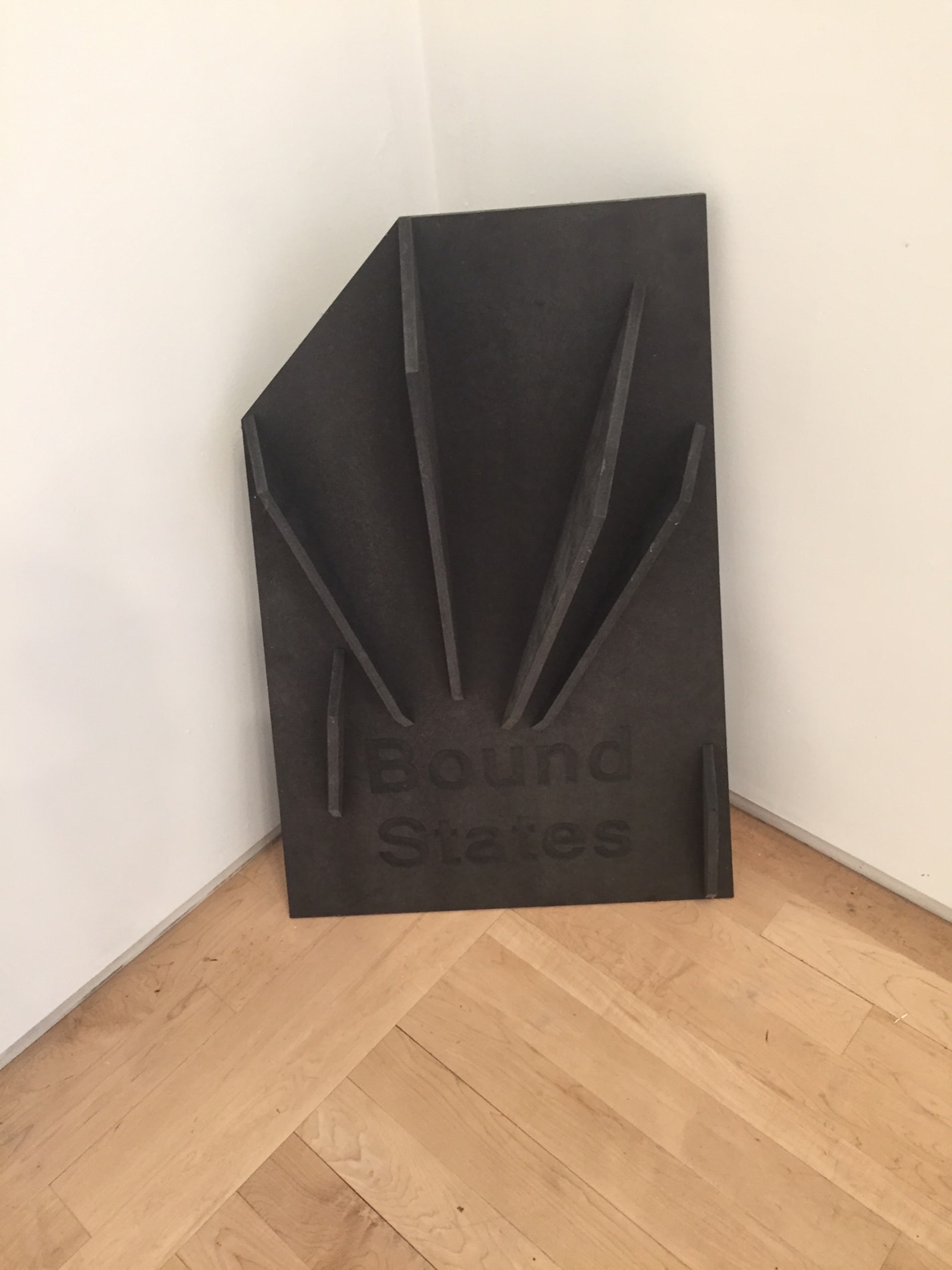
Astral America was curated by Keren Moscovitch, SVA faculty member and assistant director of Special Programs in the Division of Continuing Education.

